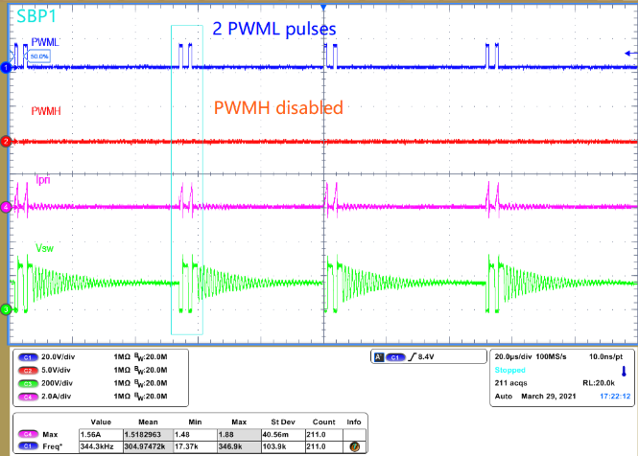SLUAAF9 September 2021 UCC28782
- Trademarks
- 1 Initial Board Visual Inspection and Start-up Check
- 2 Typical System Operating Waveforms
- 3Typical System Protection Waveforms
- 4Common Issues and Solutions
- 5References
2.2 SBP1 Mode
Gradually increase load at SBP2 mode, the system will entry SBP1 mode, PWMH is still disabled and there are two PWML pulses in each burst packet. The peak current is fixed and this is determined by VCST(MIN). Burst frequency is less than 25 khz and it is variable based on the load. As shown in Figure 2-2.
 Figure 2-2 SBP1 Mode Operation
Waveform
Figure 2-2 SBP1 Mode Operation
Waveform